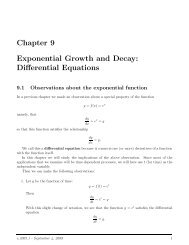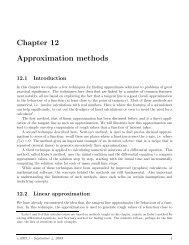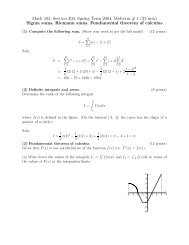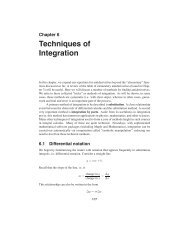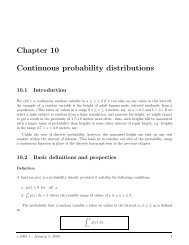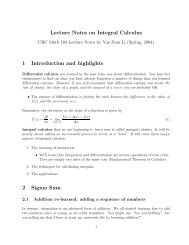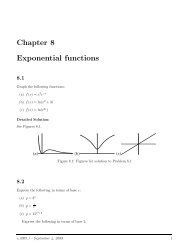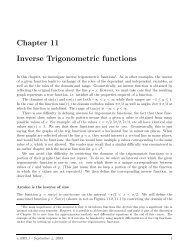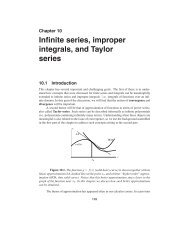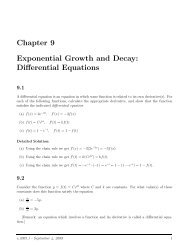Chapter 10 Trigonometric functions - Ugrad.math.ubc.ca
Chapter 10 Trigonometric functions - Ugrad.math.ubc.ca
Chapter 10 Trigonometric functions - Ugrad.math.ubc.ca
You also want an ePaper? Increase the reach of your titles
YUMPU automatically turns print PDFs into web optimized ePapers that Google loves.
Math <strong>10</strong>2 Notes <strong>Chapter</strong> <strong>10</strong><br />
b<br />
θ<br />
c<br />
a<br />
Figure <strong>10</strong>.9:<br />
Angle sum identities<br />
The trigonometric <strong>functions</strong> are nonlinear. This means that, for example, the sine of the sum of<br />
two angles is not just the sum of the two sines. One <strong>ca</strong>n use the law of cosines and other geometric<br />
ideas to establish the following two relationships:<br />
sin(A + B) = sin(A) cos(B) + sin(B) cos(A)<br />
cos(A + B) = cos(A) cos(B) − sin(A) sin(B)<br />
These two identities appear in many <strong>ca</strong>lculations, and will be important for computing derivatives<br />
of the basic trigonometric formulae.<br />
Related identities<br />
The identities for the sum of angles <strong>ca</strong>n be used to derive a number of related formulae. For example,<br />
by replacing B by −B we get the angle difference identities:<br />
sin(A − B) = sin(A) cos(B) − sin(B) cos(A)<br />
cos(A − B) = cos(A) cos(B) + sin(A) sin(B)<br />
By setting θ = A = B in these we find the subsidiary double angle formulae:<br />
and these <strong>ca</strong>n also be written in the form<br />
sin(2θ) = 2 sin(θ) cos(θ)<br />
cos(2θ) = cos 2 (θ) − sin 2 (θ)<br />
2 cos 2 (θ) = 1 + cos(2θ)<br />
2 sin 2 (θ) = 1 − cos(2θ).<br />
(The latter four are quite useful in integration methods.)<br />
v.2005.1 - September 4, 2009 12



